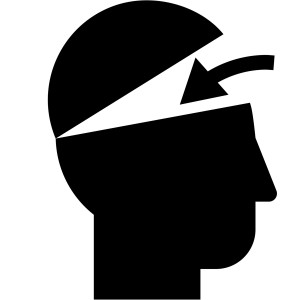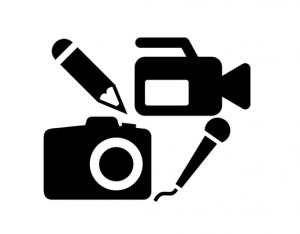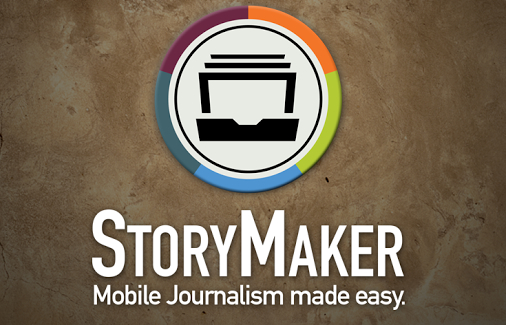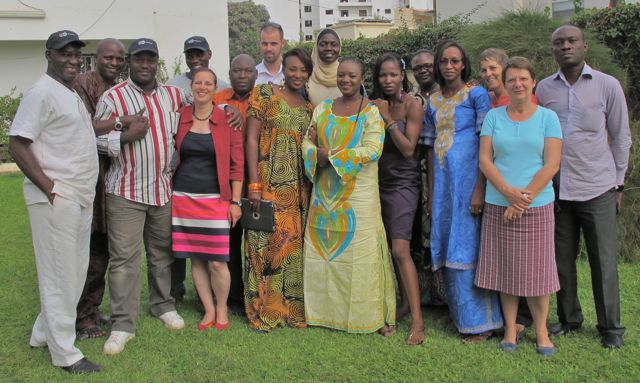Search Results for Tag: journalism training
Useful gadgets for journalism trainers
Fortunately at DW Akademie we have access to professional equipment for training courses and are very well supported by our technical staff.
But along with bringing training equipment such as VJ camcorders, laptops or audio recorders, packing a few travel-size gadgets can help trouble-shoot problems you might encounter during courses and help your participants.
For onMedia, journalism trainer Guy Degen opens up his grab bag of gadgets to make training and life a little bit easier on the road.
![]() read more
read more
Must-Read Research Papers for Journalism Trainers
 Journalism training and media development have evolved into a huge sector. It spans international development agencies, public, private and community media, NGOs, civil society groups, foundations, academia and private contractors. As a trainer, even if you have considerable experience, there’s a risk of concentrating on simply implementing the specific learning objectives of your next workshop without giving thought to the bigger picture or taking into consideration some of the findings from research into media development.
Journalism training and media development have evolved into a huge sector. It spans international development agencies, public, private and community media, NGOs, civil society groups, foundations, academia and private contractors. As a trainer, even if you have considerable experience, there’s a risk of concentrating on simply implementing the specific learning objectives of your next workshop without giving thought to the bigger picture or taking into consideration some of the findings from research into media development.
Here’s what I mean. An article in the Economist magazine back in 2007 spoke of a boom in journalism training in developing countries. The article raised a number of points that should grab the attention of any journalism trainer or project manager:
“The need for basic reporting skills is still central.”
“Participants in the courses praise the results, while complaining about the lack of focus and co-ordination among some providers.”
“More is not always better. Quality varies wildly.”
“Some courses aspire loftily to build democratic societies through a free press.”
Seven years on, some of those points might sound familiar to you or even appear on your course evaluation forms. So whether you’re training journalists or working in other areas related to media development such as press freedom, community media, access to information or digital innovation, it would be worth reading the recently published research papers below.
Perhaps just as important, we can continue to ask ourselves: what’s working?, what’s not working?, and what more needs to be done in this field?
![]() read more
read more
Using Medium for online journalism training
![]() Encouraging trainees to use a blog platform such as WordPress, Blogger or Tumblr is a common approach in online journalism training.
Encouraging trainees to use a blog platform such as WordPress, Blogger or Tumblr is a common approach in online journalism training.
The benefits in training workshops are numerous:
– most blog platforms are free to use and useful for training the basics of writing for the web;
– a blog post can replicate a standard online article;
– a blog is an easy to use, creative digital space;
– trainees can experiment with embedding multimedia and even adjusting html code;
– and, particularly for print journalists moving to digital media, the CMS of a blog often functions in a similar way to the CMS of a news media website.
However, if you’ve ever shown trainees examples of scrolling style stories such as the NYT’s Game of Sharks and Minnows or the Guardian’s Firestorm, you’ll often hear the question: how can we produce the scrolling style, especially for long form writing such as magazine style feature stories?
I usually point out the obvious, explaining that blogs do in fact let you scroll down the page. And depending on the level of experience of the participants, I might also suggest storytelling applications that onMedia has tested such as Creatavist.
But more so these days, particularly if I’m training short workshops, I like to introduce trainees to Medium – the blog platform developed by Blogger and Twitter founder Evan Williams.
![]() read more
read more
Interview: New newsrooms mean more teamwork

CC image courtesy of victoriapeckham on Flickr
Many traditional newspaper publishers have completely restructured their newsrooms so that their print and online departments now work together. The way that they have done though varies enormously. In some, print and online journalists work side by side; in others, there is no distinction between the two departments at all.
Klaus Meier is a German media expert who has been closely observing exactly how media organizations are integrating their newsrooms. Together with researchers from Spain and Austria, Meier first published a detailed analysis of newsroom convergence in 2008. The team have done a follow up study this year.
DW Akademie’s Steffen Leidel talked to Klaus Meier about what newsrooms look like today and what these changes mean for the journalism of the future.
![]() read more
read more
Tools and Apps for Journalists: ThingLink
What is ThingLink?
 Add extra layers of information to images by adding links.
Add extra layers of information to images by adding links.
Thinglink lets you embed “tags” – hyperlinks and text – into images. If you have a great photograph or image you can add a link to another photo, or a website, or video clip, or audio clip – literally anything. It’s a very useful tool for creating simple pieces of interactive media to compliment a story or to use as a basic story platform. This tool is always a winner with participants in online journalism workshops. As we roll our mouse over a “tag” revealing a link to another piece of media, there is usually a collective “Aha!” from participants. And if you’re a regular reader of onMedia, you’ve probably noticed that we like to use this tool a lot.
In a much cited example here in Germany, the Berliner Morgenpost used ThingLink very effectively with a photograph of the White House Situation Room during the raid on Osama bin Laden’s hideout. The icons identify who was in the room and provide relevant links.
![]() read more
read more
Visual storytelling and moving beyond ‘multimedia’: Part 2
 In Part 1 of Visual storytelling and moving beyond ‘multimedia’ freelance trainer Guy Degen explored some of the problems with the term “multimedia”. The post also featured the World Press Photo Academy-FotoFederatie study into multimedia produced by Dr David Campbell. In Part 2, we present an in-depth interview Guy conducted with David Campbell about his research and trends in visual storytelling.
In Part 1 of Visual storytelling and moving beyond ‘multimedia’ freelance trainer Guy Degen explored some of the problems with the term “multimedia”. The post also featured the World Press Photo Academy-FotoFederatie study into multimedia produced by Dr David Campbell. In Part 2, we present an in-depth interview Guy conducted with David Campbell about his research and trends in visual storytelling.
The full study PDF can be downloaded here.
![]() read more
read more
Visual storytelling and moving beyond ‘multimedia’: Part 1
 Multimedia. It’s a term that’s part of the global language of media and journalism and yet, why do we find it problematic to use or define?
Multimedia. It’s a term that’s part of the global language of media and journalism and yet, why do we find it problematic to use or define?
We apply the word “multimedia” in many different ways – from describing types of stories to job titles to categories of awards to sections of websites to journalism courses and workshops, and yes, even the category of this blog post.
A common starting point for discussing “multimedia” is usually something to do with stories using a combination of photography, audio, video, text and graphics.
But is that precise? Is a book with text and pictures “multimedia”? Why is a video story frequently considered to be “multimedia”? And, if we present our audience with the same story but in different versions – audio, video, or text and photos – is that also “multimedia”?
In a blog post entitled I Hate Multimedia, MediaStorm’s Eric Maierson recently summed things up by saying “multimedia” can mean anything, it just depends on whom you ask.
‘The real issue is that “multimedia” is too small. It distracts and limits the possibilities we should be embracing.’
But while “what is multimedia?” is an ongoing and contentious debate, there is a sense that media professionals want to move forward. Especially at a time when technology, such as smartphones, tablets and social media, offer new storytelling and distribution possibilities and place even more pressure on the business models of older media, and media professionals who are struggling to adapt.
So, where to next for “multimedia”?
![]() read more
read more
Histoires Africaines II: Le rap, les lasers, les poulets et du sel -un mix captivant
“C’est où votre péripétie?” demande Ramata Konaté. Ibrahima Keita la regarde. Il montre du doigt au mur où il a collé son story-board: “C’est ici que le ramasseur du sel compte ses bassines de sel.”
Nous sommes à Dakar en pleine session de formation. Quatre équipes de télé, venant de quatre pays différents, chacune composées d’un journaliste, d’un caméraman et d’un monteur se sont réunis pour suivre la première session du projet Histoires Africaines II.
C’est le dernier jour de préparation, demain les tournages commencent. Le but de ces deux semaines de formation: Tourner des grands reportages de qualité. Après des exercices de prise de vue et de longues discussions sur les sujets et leurs dramaturgies les participants ont planifié leurs tournages respectifs. Une fois sur le terrain la réalité en est une autre, mais nos équipes font preuve de la flexibilité et de l’acharnement. Ils montent leurs reportages jusque tard dans la nuit, s’appliquent pour écrire un texte pertinent et bricolent jusqu’à ce que le son d’ambiance colle à cent pour cent. Et voici quatre grands reportages réussis.
![]() read more
read more
Tools and Apps for Journalists: StoryMaker
What is StoryMaker?
 Do you have an Android smartphone? Then you’re set to produce multimedia stories. StoryMaker is an open source Android app designed to help you learn how to gather, produce and publish multimedia stories.
Do you have an Android smartphone? Then you’re set to produce multimedia stories. StoryMaker is an open source Android app designed to help you learn how to gather, produce and publish multimedia stories.
You can use the app to shoot and edit photo and video; record audio; produce an audio slideshow, and, write text. You can then combine these multimedia elements into a finished story and publish it on your social media networks and on the StoryMaker platform. But as well as being a story production and publishing tool, StoryMaker is a training app offering lessons on journalism, audio, photography, videography and security.
![]() read more
read more
Richard Sambrook: ‘The values of traditional journalism still matter’
After years of hype surrounding the rise of social media and the Internet as alternative sources of news and information, a growing number of voices are warning that traditional journalistic standards of objectivity and impartiality are still necessary even in the digital age. One of them is journalism professor and former head of BBC news Richard Sambrook.
In a recent study, Sambrook (@sambrook) writes of serious concerns about the quality and practices of news media. While acknowledging that it is difficult to enforce professional standards in the digital age, he concluded it would be “dangerous” to “disregard such standards”. DW Akademie’s Steffen Leidel discussed these issues and more with Richard Sambrook.
![]() read more
read more










Feedback